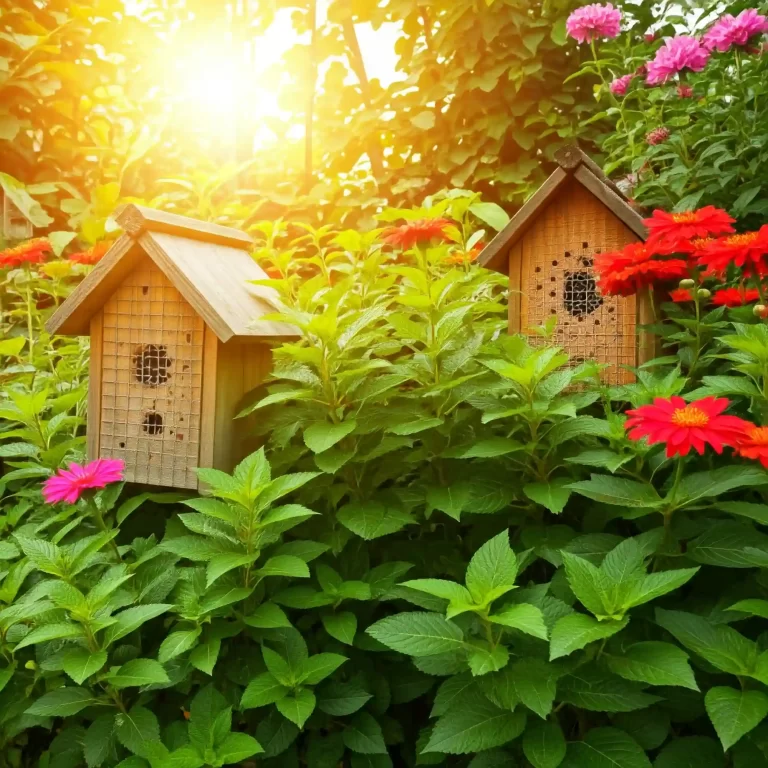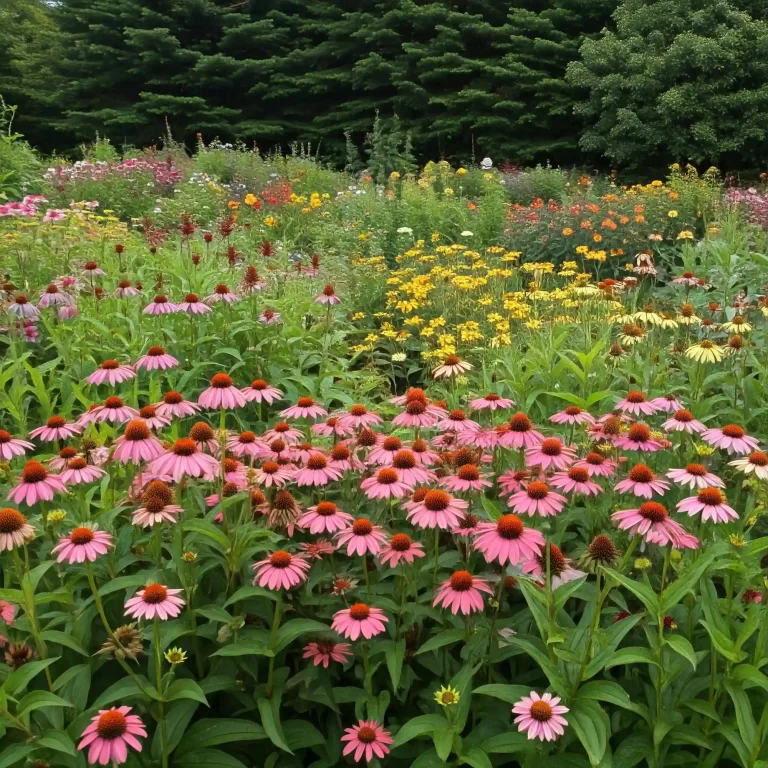Key Takeaways:
- Mulch is a layer of material (like wood chips, bark, or compost) spread around plants to suppress weeds, retain moisture, and improve soil health.
- Organic mulches decompose over time, adding nutrients to the soil.
- Inorganic mulches (like gravel or fabric) last longer but don’t offer the same nutritional benefits.
- Applying mulch properly is key to maximizing its effectiveness.
What is Mulching?
Mulching is a low-maintenance gardening technique that involves applying a layer of material to the soil surface around your plants. It’s like a protective blanket for your precious greenery, offering a multitude of benefits:
- Weed Suppression: Mulch acts as a physical barrier, blocking sunlight that weed seeds need to germinate. No sunlight, no pesky weeds!
- Moisture Retention: Mulch slows down water evaporation from the soil, keeping your plants hydrated for longer, especially during hot and dry spells. Less watering for you, happy plants all around!
- Improved Soil Health: Organic mulches, like wood chips or bark, decompose over time, enriching the soil with nutrients and fostering beneficial microorganisms. Think of it as a slow-release fertilizer for your plants!
- Temperature Regulation: Mulch helps moderate soil temperature, keeping it cool in the summer and warmer in the winter, providing a more stable environment for your plants’ roots.
- Erosion Control: Mulch acts as a shield, reducing soil erosion caused by heavy rain or strong winds. No more precious topsoil washing away!
- Aesthetics: A well-applied layer of mulch adds a neat and tidy finish to your garden beds, boosting curb appeal.
How Does Mulch Suppress Weeds?
Weeds are the bane of every gardener’s existence. They compete with your prized plants for water, nutrients, and sunlight. But fear not, mulch comes to the rescue! Here’s how it works:
- Blocking Sunlight: As mentioned earlier, mulch acts as a physical barrier, preventing sunlight from reaching the soil surface. Remember, weed seeds need sunlight to germinate. No light, no weeds!
- Smothering Existing Seedlings: A thick layer of mulch can smother any existing weed seedlings struggling to break through the surface.
- Creating a Less Hospitable Environment: Mulch alters the soil’s microclimate, making it less favourable for weed seed germination and growth.
Different Types of Mulch
When it comes to mulch, you’re spoilt for choice! Here’s a breakdown of the two main categories:
Organic Mulches:
These decompose over time, adding nutrients to the soil and promoting healthy microbial activity.
- Wood Chips: A popular and affordable option, available in various sizes and colours. Perfect for suppressing weeds and retaining moisture.
- Bark: Another readily available and visually appealing choice. Choose shredded or nugget bark depending on your preference.
- Compost: A winner for both weed control and soil enrichment. Apply finished compost that’s aged and cooled down to avoid burning your plants.
- Straw: A budget-friendly option that breaks down quickly, adding organic matter to the soil. Be aware that straw may need to be replenished more frequently.
- Leaves: Shredded leaves make a fantastic free mulch option, rich in nutrients. However, whole leaves can mat together and impede water infiltration.
Benefits and Drawbacks of Organic Mulches
| Organic Mulch | Benefits | Drawbacks |
|---|---|---|
| Wood Chips | Affordable, weed suppression, moisture retention | Can break down slowly, may attract termites if not properly sourced |
| Bark | Attractive, weed suppression, moisture retention | Can be more expensive than other options |
| Compost | Nutrient-rich, improves soil health, weed suppression | May contain weed seeds if not properly composted |
| Straw | Affordable, readily available | Breaks down quickly, may need frequent reapplication |
| Leaves (shredded) | Free, nutrient-rich | Can mat together if not shredded |
Inorganic Mulches:
These last longer than organic mulches but don’t offer the same nutritional benefits to the soil.
- Gravel: Provides excellent weed control and a decorative touch. Choose rounded gravel to avoid damaging plant stems.
- Landscape Fabric: A popular choice for weed control, but it needs to be breathable to allow water to pass through.
- Rubber Mulch: A colourful and long-lasting option, perfect for high-traffic areas. Be aware that it can get quite hot in direct sunlight.
Benefits and Drawbacks of Inorganic Mulches
| Inorganic Mulch | Benefits | Drawbacks | |
|---|---|---|---|
| Gravel | Excellent weed control, decorative touch | Can damage plant stems if not rounded | |
| Landscape Fabric | Popular choice for weed control | Needs to be breathable to allow water to pass through | |
| Rubber Mulch | Colourful, long-lasting, perfect for high-traffic areas | Can get quite hot in direct sunlight | sunlight |
Choosing the Right Mulch for Your Needs
With so many mulch options available, selecting the perfect one for your garden can feel overwhelming. Here are some key factors to consider:
- Your Plants’ Needs: Different plants have varying preferences. Vegetables often benefit from organic mulches that decompose and add nutrients to the soil. Established trees and shrubs might do well with a more permanent option like gravel.
- Climate: In hot and dry climates, choose a mulch that retains moisture well, like wood chips or bark. In cooler regions, shredded leaves or straw can be suitable options.
- Aesthetics: Consider the overall look you’re going for in your garden. Wood chips or bark offer a natural woodland feel, while gravel or coloured rubber mulch can add a modern touch.
- Maintenance: Organic mulches need to be replenished every year or two as they decompose. Inorganic mulches may require less frequent top-ups but might need edging to prevent them from spreading into unwanted areas.
Applying Mulch Effectively
Here’s a step-by-step guide to applying mulch like a pro:
- Prep the Area: Remove any existing weeds or unwanted vegetation from the bed. This will prevent them from growing through the mulch later. You can loosen the top few inches of soil with a rake to improve drainage and air circulation.
- Choose the Right Depth: Aim for a 2-3 inch layer of mulch around most plants. Avoid piling mulch directly against tree trunks or plant stems, as this can trap moisture and promote rot.
- Spread Evenly: Use a rake or shovel to distribute the mulch evenly around your plants. Create a natural-looking edge using a spade or edging tool.
Top Tips for Mulching Succes
Here are some bonus tips to ensure your mulching efforts are fruitful (pun intended!):
- Don’t overdo it: A thin layer of mulch is better than a thick one that can smother plants and impede oxygen flow.
- Reapply as Needed: Organic mulches will decompose over time, so plan to top them up every year or two.
- Edge Your Beds: Edging your garden beds with stones, bricks, or metal edging will help keep the mulch contained and prevent it from spilling over onto walkways or driveways.
- Consider a Pre-Emergent Herbicide: For stubborn weeds, use a pre-emergent herbicide before applying mulch. Remember to follow the product instructions carefully.
Mulching is a simple yet effective gardening technique that offers a multitude of benefits. By suppressing weeds, retaining moisture, and improving soil health, mulch can give your plants a helping hand to thrive. With the right type of mulch and proper application, you can create a beautiful, low-maintenance garden that will be the envy of the neighbourhood.


